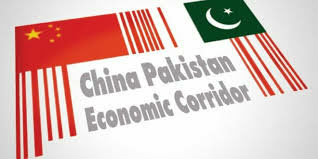Dr Mehmood Ul Hassan Khan
DESPITE rapidly changing geopolitical and geostrategic situation in the region, increasing rag of international power brokers and hue and cry of global media groups, creating doubts about the nature, composition, utility, significance and prospects of the China-Pakistan Economic Corridor (CPEC), it is heading towards its 2nd phase in the country.
According to Chairman of CPEC Authority Asim Saleem Bajwa, the second phase of the China-Pakistan Economic Corridor (CPEC) is decisive for the economic development of Pakistan. Chairman Bajwa said that projects under CPEC are making progress amid COVID-19. He briefed that the execution of 874 MW Suki Kinari Hydel Power Project in Khyber Pakhtunkhwa (KP) remains unaffected despite COVID-19 and 50% work on the project has been completed. The project is being executed at Kunhar River, with an investment of $ 1.963 billion under CPEC. So far, the project has created over 4,000 jobs.
The second phase of CPEC assures massive industrialization, sustainable socio-economic development, smart agriculture, strategic development of blue economy and last but not the least, tourism growth in the country. According to latest report (May 2020) of Pakistan Bureau of Statistics (PBS), the large-scale manufacturing (LSM) had shown negative growth of 1.15% in February due to sluggish economic activities in the country. The LSM, which constitutes 80% of manufacturing and 10.7% of the overall GDP, had recorded negative growth of 3.03% during eight months (July to February) of the current fiscal year.
The international financial institutions like World Bank and International Monetary Fund had projected negative growth for Pakistan during current fiscal year due to the ongoing COVID-19 crisis.
The PBS data showed that growth of big industries like coke and petroleum products, pharmaceutical, chemical, automobiles, electronics and steel sectors had declined in first seven months of the ongoing fiscal year. So, CPEC 2nd phase would be game changer to rescue macro-economy of Pakistan from the clutches of recession and negative LSM which shows its strategic significance for the national economy of Pakistan too. Being prominent regional expert of CPEC & BRI I reaffirm that the CPEC has the potential to promote industrialization in Pakistan. The mega project will accelerate industrial cooperation in a range of spheres including agriculture, pharmaceuticals and digital technology.
It is suggested that both countries should explore existing huge scope for investment in the health sector including pharmaceuticals and expansion of hospitals’ network. Moreover, its 2nd phase could speed-up digitalization process in the country which could promote digital education in the remote areas of Pakistan. CPEC 2nd phase should promote value added textiles items, agro-based industries, food processing units and information technology. Under CPEC framework agreements on industrial cooperation with agriculture and socio-economic development was signed in 2018. It is hoped that second phase of CPEC would reap the benefit of the success of earlier completed projects and would focus much further on economic activity and job creation.
Under CPEC 2nd phase priority will be given to the Special Economic Zones (SEZs) which will definitely help attract large foreign investment into Pakistan and help reverse the tide of de-industrialization over the last 10 years. The government had also announced incentives including tax breaks to attract businesses to make investment into Pakistan through joint ventures with local industry. According to official data pertaining to the CPEC 2nd phase execution, 27 projects in the area of education, health, agriculture, poverty alleviation and water supply have been identified of which 17 are on priority list and will be completed.
The second phase of the Free Trade Agreement between China and Pakistan came into effect in January 2020 entitled Pakistan’s exporting products such as leather, cotton and garment products for zero-tariff entry into China’s market. China will complete its 30th Five-Year Plan, with an ambition to eliminate absolute poverty completely. 2020 will be a historical year to usher in a new chapter of cooperation between China and Pakistan under the umbrella of the CPEC.
The projects to be launched in 2020 include the upgrade of the Railway’s Main Line (ML-1), a $9 billion project, which will significantly enhance the railway infrastructure for trade in goods and services. For the MLI project, the Financing Committee would work more rapidly on the ML1 Project. Negotiations for the Petro-chemical plant, refinery and gas pipeline are also ongoing. Projects also include the trade and transport connectivity projects of KKH Phase-II Havelian-Thakot (118km) road and the Sukkur-Multan (392km) highway.
According to official data of China, during the first phase of CPEC, substantial work on infrastructure and power generation have already been completed. In transport development, 1,456 KM roads are under construction while 1,544 KM are already completed. In the energy sector, seven projects are in progress with a 4,170MW power generator project nearing completion, while 5,320MW of electricity plant has already been added to the national grid of Pakistan.
A further energy plant for generating a massive 2,844km is already planned. In terms of updating internet connectivity, 820km of optical fibre has been stretched linking Khunjerab to Rawalpindi. Among the other completed projects, the Gwadar seaport is functional. Most recently, the first bulk cargo ship for landlocked Afghanistan has been reached at Gwadar deep-sea port which will revolutionize transit trade with the landlocked Central Asian Republics (CARs) in the days to come. MV Manet is the first bulk cargo vessel that arrived at the deep-sea port on 28 May 2020, carrying a big consignment of wheat and urea fertilizer for Afghanistan under the Afghan Transit Trade.
The Gwadar deep-sea port is one of the strategic priorities of the CPEC & BRI that envisions infrastructure development and investment in nearly 70 countries around the world. To further strengthening of social development the Gwadar Smart City Master Plan has already been approved and is currently going through implementation under CPEC. CPEC 2nd phase will accelerate industrialization process and create jobs in the country too.
996










